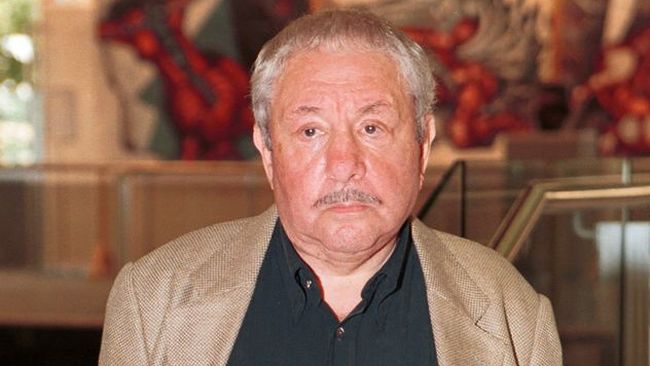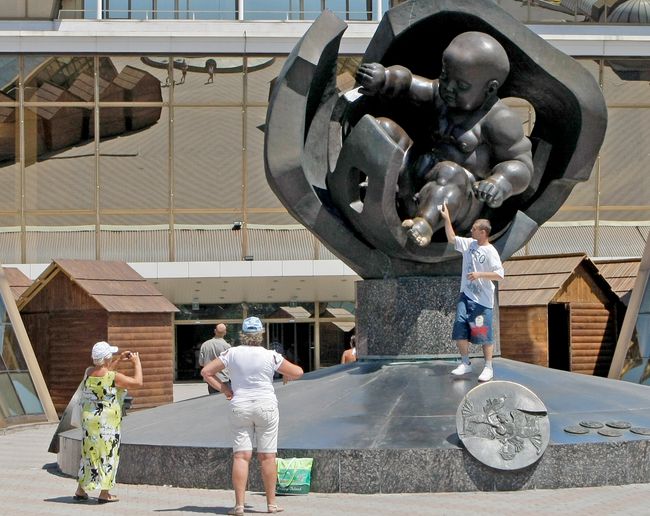White and Black
Famous sculptor Ernst Neizvestny dies in the US
Sad tidings came from New York: the sculptor who became one of the icons of contemporary art had died at the age of 91. The news was reported by Echo of Moscow, a radio station, referring to journalist Oleg Sulkin’s message on Facebook. Neizvestny had lived in the US for the last 40 years.
“My life was written by a sadly talentless author according to the best rules of the Literary Institute: exposition, rising action, and the unexpected denouement, like in O. Henry’s works,” said Neizvestny as quoted by vesti.ru. His biography, both personal and artistic, is to a great extent a geography: first that of the USSR, and then of the world. Neizvestny was born in Sverdlovsk. In 1943 he volunteered to go to the Second Ukrainian Front right from Central Asia, where his Leningrad Art School had been evacuated. Two weeks before the victory he was seriously wounded in Austria. His parents got a KIA notice and the Order of the Red Star. They were informed that their son had been awarded posthumously.
A decade after his “second birth” Neizvestny becomes member of the Union of Artists. His relationship with the Soviet regime will deteriorate in 1962. At an exhibit at Manege, Moscow, Secretary General Khrushchev approached his works. Sculptor Neizvestny tried to defend his “freak factory” in front of the audience. “I said, ‘Tell me, who told you that you can judge art? That person is your enemy.’ He stared at me tenderly with his sly little eyes. It seemed as if he liked my swearing, my outrage, and my total lack of fear,” reminisced the sculptor.

The Golden Child was erected in front of the Odesa Maritime Port in 1995, the sculptor’s gift to the city / Photo by Mykola TYMCHENKO, The Day
Time was the best judge in their argument over the essence of the art of social realism: Khrushchev’s family will ask no other but Neizvestny to design a monument on the former Secretary General’s grave at the Novodevichy Cemetery in Moscow. The monument was erected a year before the sculptor’s emigration from the USSR, in 1975.
With the rise of Leonid Brezhnev to power Neizvestny lost his clientele altogether: out of 850 works, only 4 were sold.
In 1976 Neizvestny emigrated to Switzerland, only to move to the US in 1977. He was a visiting professor at the New York University, Harvard, Yale, the University of California, and the Columbia University.
Neizvestny is a sculptor of global scale. His works stand all over the world, including monuments in Ukraine. Neizvestny’s most significant work was Prometheus (1966), raised in the children’s summer camp Artek on the rocks brought by the children from 83 countries. Now this is part of the occupied Crimea, reminds 112.ua, a TV station. The Golden Child was erected in front of the Odesa Maritime Port in 1995, the sculptor’s gift to the city. The monument represents a tree with a baby appearing from the fruit on it. According to the author, the sculpture “represents something new being born, a master of the future.” This sculpture is dedicated to all the prodigy children of Odesa and portrays a baby in the mother’s womb.
According to meduza.io/news, Jeff Blumis, Neizvestny’s friend, told that the sculptor passed away in the morning of August 9 local time at the Stony Brook Hospital, where he had been interned with bad stomach pains. The sculptor’s family have not yet decided on the location of the funeral, Blumis said, but this matter will be settled shortly.
Newspaper output №:
№47, (2016)Section
Time Out





